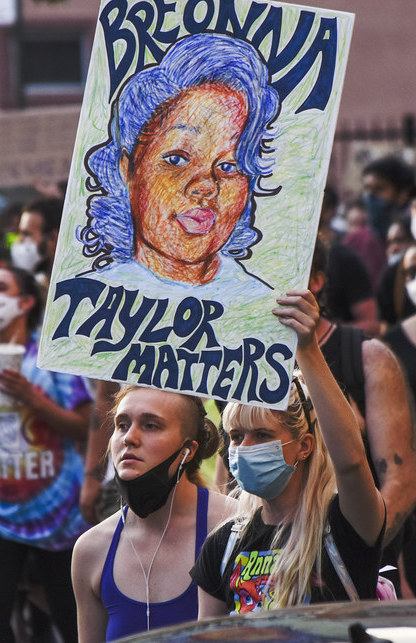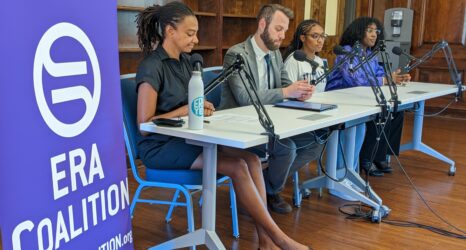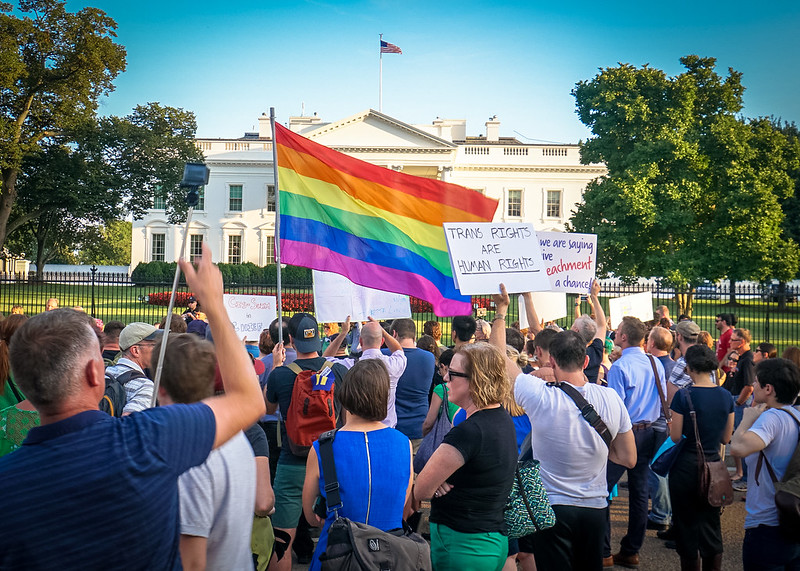
It’s been five years since gay marriage became legal everywhere in the U.S.—and still our rights are up for debate. This summer saw yet another round of cases and laws determining the future of LGBTQ rights in the U.S., the results of which speak to the complexities of existing and surviving as an LGBTQ person today.
Chase Strangio is the deputy director for Transgender Justice with the ACLU’s LGBT and HIV project, where he’s been involved in several recent pivotal Supreme Court rulings on trans rights. Strangio was a part of the team representing Aimee Stephens, a trans woman who, after being fired for being trans, brought the first case involving trans civil rights to the Supreme Court in the U.S.—and won a landmark victory for LGBTQ people nationwide this summer.
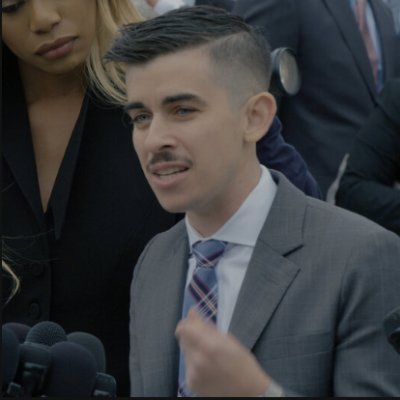
But in addition to being a tireless advocate in the courts, Strangio understands the complexities of working within a system that is inherently designed to uphold dangerous and destructive power structures—and uses his advocacy to spread that awareness.
Ms. writer Oliver Haug spoke with Strangio about the recent pivot of the anti-trans religious front from a focus on trans people in bathrooms to trans people in sports, as well as the recent passing of justice Ruth Bader Ginsburg—and what these events mean for the state of trans rights in the U.S..
Editor’s Note: This conversation has been edited for clarity and content.
Oliver Haug: Something I’ve seen you talk about and that I’ve been thinking about a lot too is this shift by anti-trans “activists” from the fixation on bathrooms to a fixation on sports—we’re seeing this new arena for the “culture war.” And I wanted to pick your brain about that, because I’m not quite sure what the reasoning behind that is.
Chase Strangio: The way that I’ve been thinking about this is, after marriage equality, it was inevitable in many ways that there was going to be a shift to attack trans people, and one that the larger LGBTQ mainstream movement wasn’t in any way prepared for. And we saw that initially in Houston, in 2015: right after Obergefell was decided by the Supreme Court, you have this campaign to repeal the Houston Civil Rights Ordinance. And even though the ordinance itself was protecting 15 classes of people from discrimination, the entire campaign to repeal the ordinance fixated on trans people.
That’s where we started to see the real capitalization from anti-LGBTQ groups on the discourse of the shadowy, ambiguous man-in-women’s-restroom narrative—that’s where it takes off in 2015, and 2016. And it’s very much grounded in this idea of the “sanctity of women’s spaces.” It was incredibly successful at first, because it tapped into people’s reflexive fear of trans people, and our bodies. But we’re able to defeat it, in large part by appealing to the idea that there is no nudity in restrooms, that you just come in and out of a restroom.
So the restroom narrative, and the locker narrative to a certain extent, is largely unsuccessful. You have state legislatures—other than North Carolina with HB2—failing to pass any bills. You have cases decided in trans students’ favor in court—the Gavin Grimm case, Drew Adams, and then a whole bunch of cases across the country.

And then probably most significantly, you have a series of ballot efforts that are unsuccessful. In Washington, in Montana, they fail. In Anchorage, Alaska, and Massachusetts, they go to the ballot and they lose. So they’ve invested a ton of resources in this anti-trans narrative, and instead of giving up, which of course they weren’t going to do, they pivot.
So at the end of 2018, into 2019, you see the pivot to sports. That’s the first real public moment when the sports narrative comes in, in the winter of 2019. In the Equality Act hearings in Congress, you have Republican witnesses focusing entirely on the quote unquote, “threat of trans people in sports,” and particularly in women’s sports.
And that is, I think, a predictable shift for several reasons. The overall goal isn’t about sports—the goal is about undermining legal protections for LGBTQ people and continuing to use that fear of trans people both to exclude trans people from every aspect of public life, and to entrench gender norms, which is essential to the goal of a lot of these organizations.
I think the reason why we see this shift is that in sport, you have a much more concrete nexus with the body itself. And so when we think about sports, you have to contend with the way our bodies are, and move and exist, including the sexed characteristics of our bodies. It becomes a logical place to shift—because in restrooms, we’re talking about physical space, and what we don’t see about the body. But in sport, it’s a question of: How do we contend with our bodies in this competitive space where the body is so salient?
And then there’s also in sport a long history of sex regulation and verification that comes out of international competition, largely, and the colonial and white supremacy driven sex verification procedures that emerged throughout the 20th century, as women start to compete internationally in competitive sport, as a way to cast doubt on some people’s womanhood, particularly Black women and other women from the global south. That then becomes the site in which the discourse is animated in the U.S. after the restroom ban is unsuccessful.
The other difference between the restroom and sport is that in sport, there can be a story about people being physically displaced—only certain teams win, certain individuals win. So the question becomes, is one woman more “woman” than another?
I think what we’re seeing now is a leveraging the long history of discrimination in sport against all women in the service of trying to exclude trans women, and to continue to enforce these incredibly retrograde notions of sex and body. And unfortunately, it’s been more successful, in part because we’ve had our opponents peel off former allies, and people who might otherwise call themselves liberal or progressive siding with the exclusionary impulse.
OH: Something I’m also interested in delving into that you mentioned is this intersection of racism with transphobia, in that these laws are often specifically used to target Black trans women. And, I mean, there’s the case—even though she isn’t trans—of Caster Semenya, which deals with really similar issues. How do we deal with the fact that it’s a plain reality that racism is a huge part of these debates, when legally we don’t necessarily see that intersection in the rulings that we get?
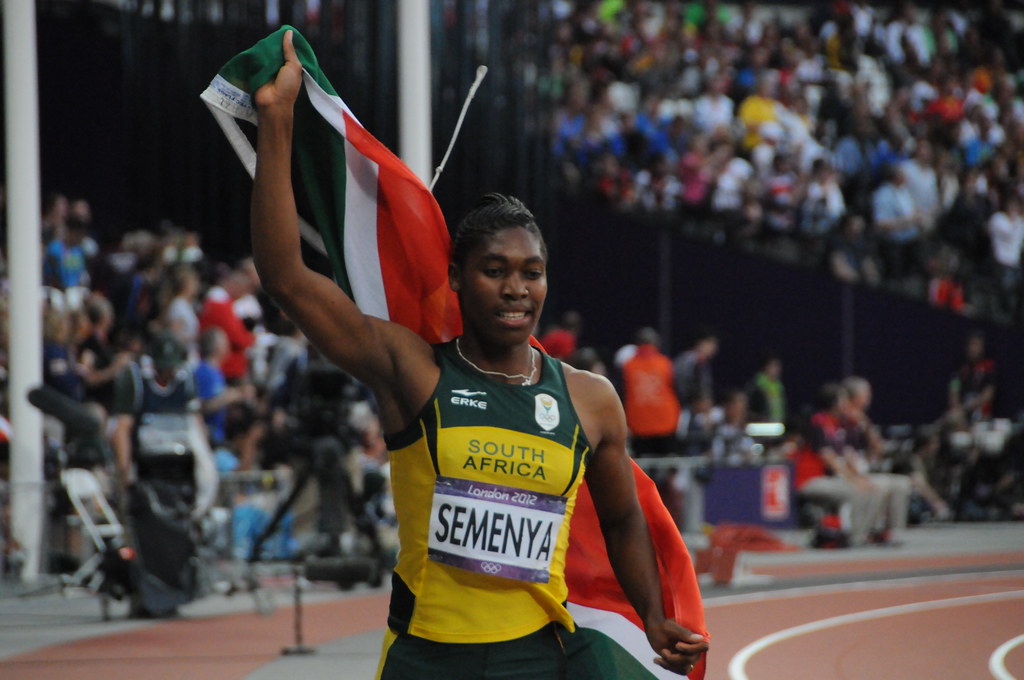
CS: So first, just to talk about the bigger picture, I think in terms of the categories of man and woman themselves, and the imposition of those categories on people for the purpose of excluding some people from the categories themselves, can’t be extricated from racism and colonial history. That defines who gets to be a woman.
And if we think about how citizenship is understood, both citizenship in the legal sense and citizenship in the larger civic sense, in the United States, Black women have largely been excluded from that, almost definitionally as the country itself is founded on systems of white supremacy. So you can’t even understand these categories separate and apart from the systems of racism that are operating in conjunction with them.
And that’s true for cis Black women and Black trans women. And you see it not only with Caster, and the many young Black trans athletes who are targeted in the U.S.—Andraya and Terry in Connecticut, Cece Telfer at the collegiate level—it’s also a huge part of the way in which cis Black woman athletes have been attacked, Serena Williams being one of the most prominent examples where often she’s called quote unquote, “man,” or her womanhood is challenged, because of her success as an excellent Black woman athlete.
The law itself does not in any way have the nuance to capture peoples multitudes—that’s one of its limitations. If you look at anti-discrimination law in general, one of the many failings of it is that discrimination is dynamic, and the law is not. It’s really difficult if you’re a Black woman to prove why someone discriminated against you.
And if you’re a Black, queer, trans woman, it’s especially difficult. Is it your Blackness? Is it your queerness? Is it your woman-ness? If it’s all of those things together, the law almost throws up its hands and says, well, we can’t do anything about it.
I think that is just a failure of formal equality and legal structures in general. And when we’re looking at how we talk about and fight these battles in court, it’s going to be somewhat reductive, when we’re talking about how the narratives are framed in the context of litigation, and even, in some contexts, legislative advocacy.
I think the important thing, though, is that as we’re talking about what is going on with the regulation of sex in sport right now, that in our public narrative, and in our understanding, we not oversimplify the history. Because I think it is incumbent upon us to tell the story as being a story that has deep and reemerging roots in the systems of the power that seek to entrench white supremacist norms of sexed embodiment, and sexed existence.
We have to keep the more nuanced and full narrative alive, where we are understanding that the law is always going to constrain and not entirely appreciate that narrative.
OH: In terms of reframing the public narrative, how are we doing? How do we fight this conservative base that’s begun to emerge? Because trans rights haven’t been in this public narrative for very long, how do we fight that kind of conservative front that has this very moral stance about it?
CS: There’s lots of different forums where we’re facing these attacks, and each one sort of demands a different strategy on some level. I think that in general we start with the individuals who are experiencing the exclusion and give them space to tell their story.
In many contexts right now, these are young athletes who are just trying to participate in a sport at a time when, particularly if you look at Terry Miller and Andraya Yearwood in Connecticut, these are two young Black women who are existing in a world where Black women are being killed by police, where Black trans women are being killed on the street. They’re youths just trying to find joy and acceptance in their lives, who found it in the context of running, and found a home in sport.
I do think that it’s going to take time, but giving people space to tell that story does shift the dialogue over time, or at least empower people to keep fighting when there’s so many forces against them. On some level, if we’re only talking about how to move cis people, and only talking about the paradigm that cis people have created, that’s not necessarily entering from the most celebratory point. And so I think, first and foremost, we have to make space for that.
The irony of all this is that all these athletes, fans—none of these people are even in school physically [because of COVID-19]. That’s a failed state, that we can’t contend with the situation that we’re in, such that there are no organized sports, there is no consistent in-person learning, and yet this is the impulse that our government has.
Just combating some of the misinformation is a really big part of this fight, and that is a longer project, because the reality is that we are taught from birth that there are simple ways to divide ourselves into categories, and that doing so is a scientific process, for which there is no error or complexity. And that’s just not true.
The ways in which our bodies are as human beings are incredibly complex. Even if we’re looking at intersex variations among people assigned female at birth, there’s a range of heights and weights and body types and structures and capacities for engaging in athletic activity. And different athletic activity demands different things of our bodies. So just talking through that, and getting people to move beyond their reflexive assumptions about what is always true, is huge.
Particularly when we’re talking about sport in the collegiate or elite international context, where people are suppressing testosterone for women and girls who are trans, making sure people understand the science of what’s happening. This sort of political impulse to exclude people from the categories of women is actually deeply not in line with the scientific realities of how medical treatment impacts our body. I think there’s a lot of information people don’t have or don’t understand about how hormones work. So making sure that that information is available is also important.
And then this idea of fairness, in sport—it’s so complicated. The whole reason why people generally like sport is because it is not what we understand to be fair. We’re not all equally equipped to be exceptional at sport, and it’s usually genetic variation that people celebrate.
I think the example of Michael Phelps was a really good one, because so many news stories would run these pieces about what made his body so different and made him so exceptional. And yet, if we look at people whose body are different in ways that we associate with sex difference, then all of a sudden we have to police people out of the category.
And you see that it’s only on the women’s side. If you look at men’s sport, you could see that within people who are competing in men’s sport, there’s a range of testosterone levels that people have, but nobody cares! Nobody’s policing that. Nobody’s policing people’s height, nobody’s policing other things we might understand as genetic advantages. It’s only when it implicates the regulation of what is categorized as a woman’s body.
So continuing to have these conversations, and not being afraid to talk about our bodies, to make sure to give people room to tell their experience of competing in sport, as trans athletes, as intersex athletes, is so important. It’s a part of the long term project of challenging us to think about why we have the categories in the first place, why we’re so afraid of people who seemingly threaten them, and then how can we move forward in a place of more inclusion, to a more expansive understanding of who we all are. I think there’s so much possibility there.
“Nobody’s policing people’s height; nobody’s policing other things we might understand as genetic advantages. It’s only when it implicates the regulation of what is categorized as a woman’s body.”
OH: I want to make sure we talk about Ruth Bader Ginsburg and what her passing, as tragic as that is, means for the Court, in terms of trans rights, and in terms of the rulings that have happened this summer. What does this mean for upcoming cases and the election?
CS: I think there’s so many ways that the last week should highlight for us the limitations of our entire system. If a single person’s death can call into question the ability of whole populations of people to survive, and if a Black woman could be murdered in her sleep and nobody held responsible—because we actually don’t have a system of justice that is able to do anything but punish Black people or punish people who are seen and treated by the system as disposable in multiple ways—then we have to reflect on the fact that this system was designed to work this way, and it isn’t working for people, and it never has.
In that sense, everything that we do in law is, from my perspective, harm reduction, and I think we’re increasingly seeing how we can’t even reduce the harm that we want to as the system is currently constituted.
I don’t think we should talk about the Supreme Court without talking about the entire federal judiciary that is completely being transformed before our eyes. We have 200 judges that are appointed, were nominated and confirmed in the lower courts, many who are incredibly young, who are going to be there for a generation, who are anti-justice in every way, from my perspective. Not all of them, but so many people whose entire lives and careers have been devoted to undermining people’s ability to survive. I think that is gravely concerning for how we can use law as a harm reduction tool.
And when we think about the Supreme Court now, it’s always been a conservative institution, and with RBG’s passing, we are in trouble with the court. Obviously, Bostock was six-three, and that was incredible, and I think it’s here to stay for now, as an interpretation of the statute. But in the coming days, I think what we should be exceedingly concerned about are the constitutional questions that are going to go up to the court that can’t be fixed by Congress. Because ultimately the court is the final word on the constitution, and amending the constitution is almost an impossibility at this point — or difficult, let’s just say.
I think we’re going to see efforts to roll back civil rights altogether, for everyone — through cases challenging the application of civil rights law, on the basis that it infringes people’s religious liberty under the First Amendment Free Exercise Clause, or under principles of free speech in the First Amendment. We’ve seen the ways in which the court has allowed death penalty to resume, and voter suppression to happen. So you take away one of the justices who was usually on the side of the more expansive vision of access to the vote and a more expansive vision of anti-discrimination law, then I think those things are in trouble, if we continue to rely on the structures as they are.
And next term, there’s a challenge to the Affordable Care Act, there’s Fulton v. City of Philadelphia, the arguments about the First Amendment free exercise, and whether or not application of generally applicable non discrimination law, even in the context of government funded services, infringes the free exercise rights of religious entities and individuals. We already saw at the end of last term, the court with RBG on it was going to greatly expand the limits of non-discrimination law under the ministerial exemptions. In the context of Title XII, I think we’re going to see an even further erosion of civil rights by the by the Roberts Court.
So all that to say, there’s lots of cases that are moving through the courts that will find their way to the Supreme Court and lots of litigants who are going to find increasingly hostile lower courts. We should be asking ourselves, how can we truly fight for justice in a system that is so adapted to maintain violent structures of power, and the status quo as it’s been for 400 years?
OH: What does the nomination of Amy Coney Barrett mean for the Supreme Court and the state of trans rights in the U.S.?
CS: In terms of Judge Barrett’s record, she has made very clear that she believes Title IX’s prohibition on sex discrimination does not extend to anti-trans discrimination—a position that is directly counter to the Court’s ruling in Bostock. She is an extremely conservative jurist with positions that will undermine civil rights protections for so many people that have fought so hard for even the most basic of formal legal protections.
The changing composition of the judiciary from the district courts up through the Supreme Court is devastating and yet, we will still use every tool available to fight for justice for the entire LGBTQ community. The courts were never going to save us and they certainly won’t now. And still we will maneuver through them as best we can to fight for people’s survival chances and to create better conditions for people to organize, build and thrive.
OH: What would you say to readers who want to advocate for trans rights, or do something to fight this clear descent into fascism we’re experiencing, but don’t necessarily know where to start?
CS: One of my first answers to this question is that we need to redistribute resources. And that can look a lot of different ways—it can look like taking money that we have, and giving it to organizations or individuals who are able to and have the expertise to fight these system, but don’t have the resources.
Because the answer is people have been organizing for generations, they’ve just been doing so without the resources without the power. And so when people with resources and with power can move the resources into the places where the answers are located, we’re going to have more robust movements.
Giving resources can look like giving money, and it can also look like giving time, it can be about showing up and helping people get to the polls. It can mean mobilizing voters in a time when so many things are in flux, and not just at the federal level, but in state legislatures—so much of the anti-trans policymaking is done at the state level. Getting people to really engage and invest significant amounts of time is vitally important.
I think also that there’s so much individual work that we all have to do to really ask ourselves: Why is it that I fear this? Or why is it that my thinking moves in this direction, and particularly when it comes to cis women who want to be allies to trans people, particularly cis parents who are raising the next generation of children and young people and caring for them, there’s so much that we can do to challenge our assumptions about gender and create more space for people to come into their own understanding of themselves.
It can be as simple as, don’t assume the second someone tells you they’re having a baby, or the second someone talks about their kid that the first thing you need to know is the gender of that child. I think our impulse to entrench a binary gender is so strong that we lose sight of the reproduction of these assumptions, even the basic sex stereotype notions that RBG spent her career fighting—they’re so inherent to how we talk about young people. And moving away from that is a bigger project that takes all of us. When spaces are seen as being exclusively for men or exclusively for women, challenge yourself to ask, why is this and does it need to be?
I think there’s just so many things that people can do to shift the conversation in their families and their communities. We have a responsibility to be talking about the assumptions that we make about the world that is or is not possible. Asking, what can I do to make this school safer for young people who aren’t like my child? What can I do to make this workplace safer when people aren’t like me? There’s so much that people can do in their most immediate orbits. And that’s often where the most change happens. More transformative change happens cumulatively over time. I’m eager to see people engaged in more creative and robust ways. Because there’s so much more we can do.
You may also like:



